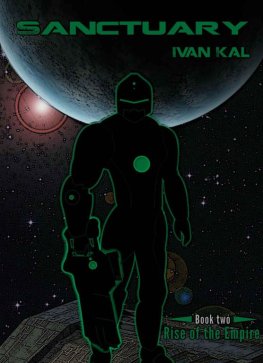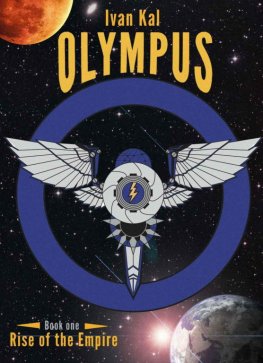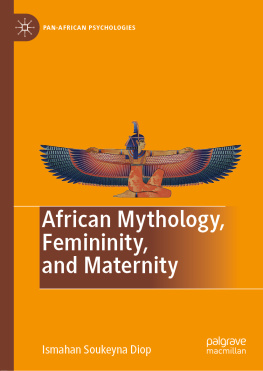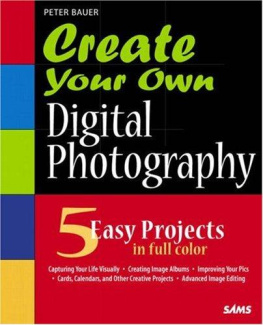Cheikh Anta Diop - Olympus Camedia C-50 Digital Camera
Here you can read online Cheikh Anta Diop - Olympus Camedia C-50 Digital Camera full text of the book (entire story) in english for free. Download pdf and epub, get meaning, cover and reviews about this ebook. year: 1974, publisher: L. Hill, genre: Art. Description of the work, (preface) as well as reviews are available. Best literature library LitArk.com created for fans of good reading and offers a wide selection of genres:
Romance novel
Science fiction
Adventure
Detective
Science
History
Home and family
Prose
Art
Politics
Computer
Non-fiction
Religion
Business
Children
Humor
Choose a favorite category and find really read worthwhile books. Enjoy immersion in the world of imagination, feel the emotions of the characters or learn something new for yourself, make an fascinating discovery.

- Book:Olympus Camedia C-50 Digital Camera
- Author:
- Publisher:L. Hill
- Genre:
- Year:1974
- Rating:3 / 5
- Favourites:Add to favourites
- Your mark:
- 60
- 1
- 2
- 3
- 4
- 5
Olympus Camedia C-50 Digital Camera: summary, description and annotation
We offer to read an annotation, description, summary or preface (depends on what the author of the book "Olympus Camedia C-50 Digital Camera" wrote himself). If you haven't found the necessary information about the book — write in the comments, we will try to find it.
Olympus Camedia C-50 Digital Camera — read online for free the complete book (whole text) full work
Below is the text of the book, divided by pages. System saving the place of the last page read, allows you to conveniently read the book "Olympus Camedia C-50 Digital Camera" online for free, without having to search again every time where you left off. Put a bookmark, and you can go to the page where you finished reading at any time.
Font size:
Interval:
Bookmark:


1. The Sphinx, as the first French scientific mission found it in the nineteenth century. This profile is neither Greek nor Semitic: it is Bantu. Its model is said to have been Pharaoh Chephren (circa 2600 B.C., Fourth Dynasty), who built the second Giza pyramid.

This book consists of selections from
NATIONS NGRES ET CULTURE, first published by
Prsence Africaine, Paris, 1955.
ANTRIORIT DES CIVILISATIONS NEGRES:
Mythe ou Vrit Historique?,
first published by Prsence Africaine, Paris, 1967
Copyright Prsence Africaine, 1955 and 1967.
This translation and edited condensation
copyright Lawrence Hill & Co., 1974
ISBN clothbound edition: 0-88208-021-0
ISBN paperback edition: 1-55652-072-7, previously 0-88208-022-9
First edition February, 1974
Lawrence Hill Books is an imprint of
Chicago Review Press, Incorporated
814 North Franklin Street
Chicago, Illinois 60610
Manufactured in the United States of America
Library of Congress
Cataloging in Publication Data
Diop, Cheikh Anta.
The African origin of civilization.
Translation of sections of Antriorit des civilisations ngres
and Nations ngres et culture.
Includes bibliographical references.
1. Negroes in Egypt. 2. EgyptCivilization
To 332 B.C. 3. Negro raceHistory. I. Title.
DT61.D5613 913.320696 7381746
To introduce Cheikh Anta Diop to English-speaking readers, we present, with the authors consent, ten chapters from his first published volume: Nations ngres et culture (1954), and three from his latest work: Antriorit des civilisations ngres: mythe ou vrit historique? (1967). For purposes of continuity and accessibility, this selection excludes most of the more technical discussions, especially the linguistic and grammatical passages, but nonetheless should give the reader a general idea of what Congolese author Thophile Obenga calls the Historical Method and Conception of Cheikh Anta Diop.
Dr. Diops method is multi-faceted and reflects his varied background as historian, physicist, and philosopher. Obenga singles him out as the only Black African of his generation to have received training as an Egyptologist. As a Senegalese, he has had direct contact with the oral traditions and social structure of West Africa. From Andr Aymard, Professor of History and later Dean of the Faculty of Letters at the University of Paris, he has gained an understanding of the Greco-Latin world. As a student of Gaston Bachelard, Frdric Joliot-Curie, Andre Leroi-Gourhan, and others, he has acquired proficiency in such diverse disciplines as rationalism, dialectics, modern scientific techniques, prehistoric archeology, and so on. More importantly, he has applied this encyclopedic knowledge to his researches on African history.
While pursuing this research, he told the First International Congress of Black Writers and Artists in September 1956, we have come to discover that the ancient Pharaonic Egyptian civilization was undoubtedly a Negro civilization. To defend this thesis, anthropological, ethnological, linguistic, historical, and cultural arguments have been provided. To judge their validity, it suffices to refer to Nations ngres et culture
Thus he proceeded in Nations ngres et culture and subsequent volumes to document conclusions that form a coherent theory, controversial because it refutes many ideas previously presented by Egyptologists, anthropologists, archeologists, linguists, and historians.
A good example of this is of the present volume in which he replies to a critical review of Nations ngres.
More than a decade ago Immanuel Wallerstein summarized Dr. Diops contribution as follows:
Perhaps the most ambitious attempt to reconstruct African history has been the numerous writings of Cheikh Anta Diop. Diop has a theory that there is a basic global division of peoples into two kinds: the Southerners (or Negro-Africans), and the Aryans (a category covering all Caucasians, including Semites, Mongoloids, and American Indians). Each grouping has a cultural outlook based on response to climate, the difference between them being that the Aryans have had a harsher climate.
The Aryans have developed patriarchal systems characterized by the suppression of women and a propensity for war. Also associated with such societies are materialist religion, sin and guilt, xenophobia, the tragic drama, the city-state, individualism, and pessimism. Southerners, on the other hand, are matriarchal. The women are free and the people peaceful; there is a Dionysian approach to life, religious idealism, and no concept of sin. With a matriarchal society come xenophilia, the tale as a literary form, the territorial state, social collectivism, and optimism.
According to Diops theory, the ancient Egyptians, who were Negroes, are the ancestors of the Southerners. This bold hypothesis, which is not presented without supporting data, has the interesting effect of inverting Western cultural assumptions. For, Diop argues, if the ancient Egyptians were Negroes, then European civilization is but a derivation of African achievement.
Born on December 29, 1923, at Diourbel, Senegal, Cheikh Anta Diop received his master of arts degree and his doctorate from the University of Paris. Since 1961 he has been on the staff of IFAN (Institut Fondamental de lAfrique Noire) in Dakar, where he directs the radiocarbon laboratory which he founded. In 1966, at the First World Festival of Negro Arts, he shared a special award with the late W. E. B. DuBois, as the writer who had exerted the greatest influence on Negro thought in the twentieth century.
All numbered footnotes in the present volume (except for inserted material included between square brackets and so indicated) are the authors and are placed at the end of the book. All asterisked footnotes within the text are the editor-translators. For the readers convenience, a list of Brief Biographical Notes on authors and authorities mentioned within the book but not identified exhaustively is given as an appendix. Most archeological terms used in the book are also listed and defined in an appendix.
M.C.
I began my research in September 1946; because of our colonial situation at that time, the political problem dominated all others. In 1949 the RDA was undergoing a crisis. I felt that Africa should mobilize all its energy to help the movement turn the tide of repression: thus I was elected Secretary General of the RDA students in Paris and served from 1950 to 1953. On July 48, 1951 we held in Paris the first postwar Pan African political congress of students, with the West African Student Union (from London) well represented by more than 30 delegates, including the daughter of the Oni of Ife, the late Miss Aderemi Tedju. In February 1953 the first issue of the Voie de IAfrique Noire appeared; this was the organ of the RDA students. In it I published an article entitled Toward a Political Ideology in Black Africa.
Font size:
Interval:
Bookmark:
Similar books «Olympus Camedia C-50 Digital Camera»
Look at similar books to Olympus Camedia C-50 Digital Camera. We have selected literature similar in name and meaning in the hope of providing readers with more options to find new, interesting, not yet read works.
Discussion, reviews of the book Olympus Camedia C-50 Digital Camera and just readers' own opinions. Leave your comments, write what you think about the work, its meaning or the main characters. Specify what exactly you liked and what you didn't like, and why you think so.








